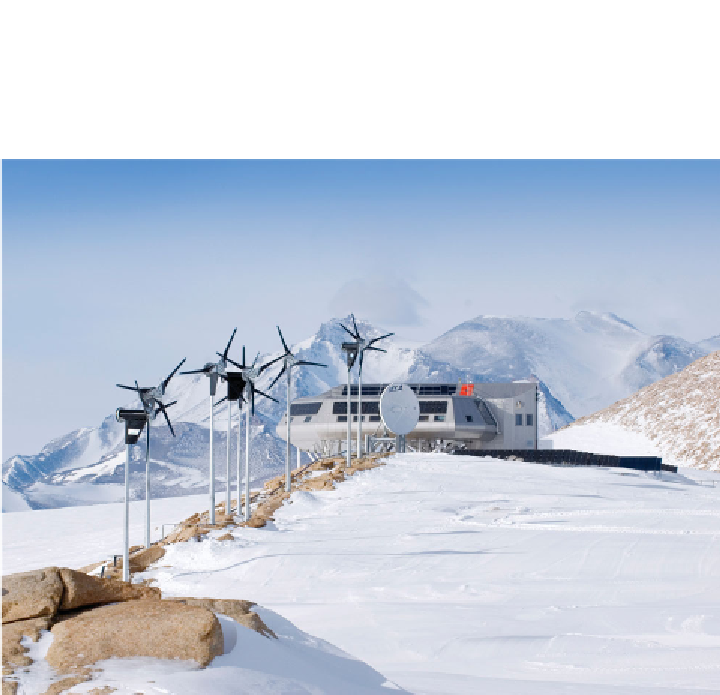Geoscience Reference
In-Depth Information
Figure 8.9
Princess Elisabeth station showing the aerodynamic design of the station and the
commitment to sustainable energy through wind turbines and solar panels. (Credit: Réne
Robert, International Polar Foundation)
Construction of the station is estimated to have cost around 22million euros, and
will house 40 people over summer periods.
The designs of Princess Elisabeth, South Pole or Halley VI are about as far
from the early huts of Scott and Shackleton as imaginable. Life inside them is
dramatically different, too. At South Pole, for example, there is an area where
vegetables can be grown hydroponically. The early explorers would probably have
never imagined eating fresh vegetables whilst living in Antarctica! Realistically, even
today for much of the year there are not very many available for the majority of
researchers and support crew. During the summer, even regularly scheduled
deliveries by ship or airplane can be delayed because of bad weather. In the
winter, there are no shipments, so food is frozen, tinned or dried. Because the
Antarctic Treaty forbids bringing soil to Antarctica, greenhouses are not an
option for growing plants but hydroponic systems
-
where plants are grown in
slowly circulating nutrient solutions
are used at a few of the larger, permanent
stations like McMurdo, South Pole and the Australian stations.
-



Search WWH ::

Custom Search